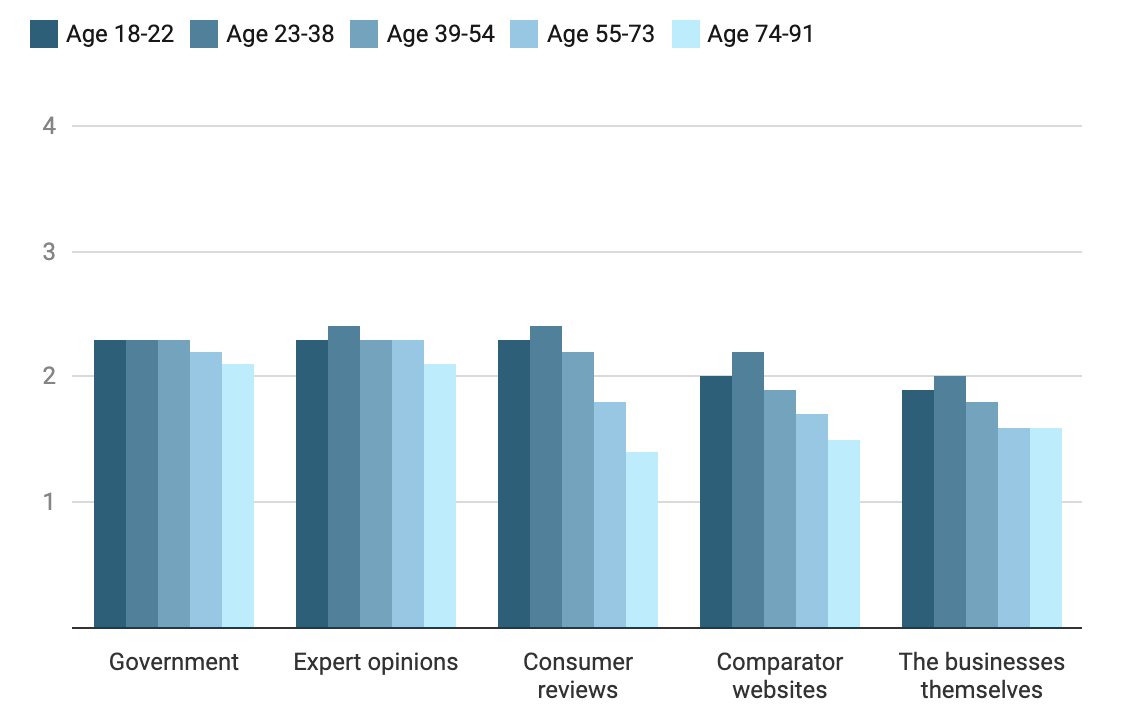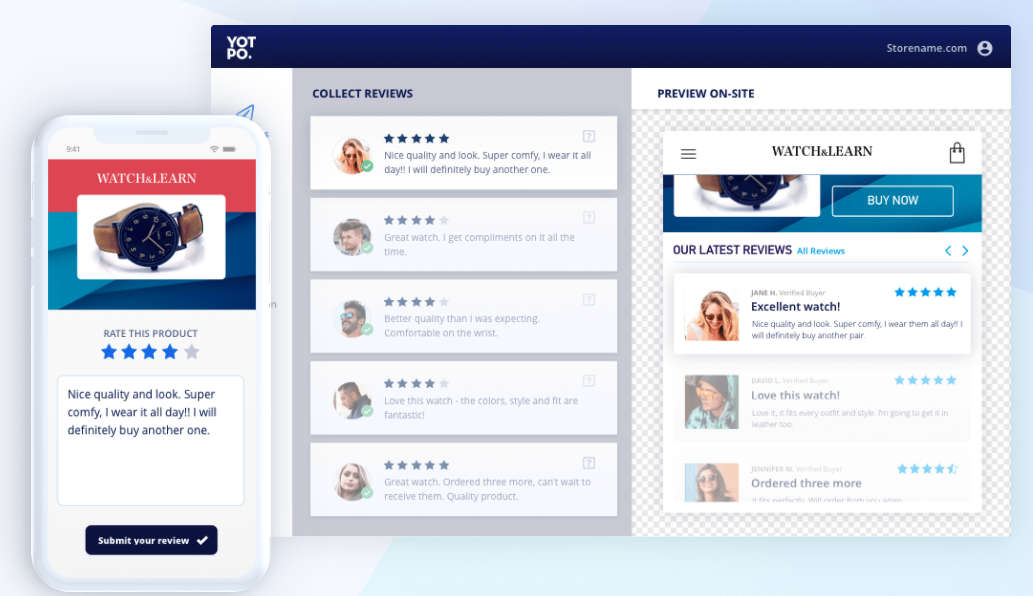Are you putting your current customers to good use as brand ambassadors? When making a big purchase, we’re more inclined to take a chance on a new company based on rave reviews from trusted sources. Reviews are a both a great acquisition and retention strategy.
Why Are Reviews so Critical to Your Marketing Strategy ?
According to a Nielsen’s Harris Poll Online, customer feedback helps other consumers make the right buying decision. Other people’s feedback helps new shoppers decide whether or not they want to engage with that brand. Reviews serve as a guide to consumers, and help shoppers make better choices. When someone shares or talks about a brand on social media, there’s a significant correlation to purchasing behaviour. This is exactly how many of us discovered brands like Spotify and Peloton (two hallmark examples of referral marketing) says the B2C article referencing a Nielsen study.
trustpilot.com shares some great facts about reviews in the video below:
And it’s not just consumers who are influenced by reviews, in fact “90% of B2B buyers are reviewing information and reviews before making a buying decision.” according to Grad Conn, in writing for Sprinklr
A recent ABC study showed that 73% of participants said they trusted online reviews. The below graph shows respondents' answers to the question: "In general, how much do you trust the following sources of information to help inform you about products, services, and businesses you are considering buying from?"
Sites were rated on the following scale: 0 = none at all, 1 = a little, 2 = a moderate amount, 3 = a lot, 4 = a great deal.

Strangers are the New Friends
Most of us rate consumer reviews — the views of perfect strangers — just as highly as the opinion of friends and family, according to the ABC article. Trust is central to the importance of reviews in our decision-making. Having said that, it’s getting harder and harder to tell the difference between a fake review and a real one.
There's a thriving trade in fake reviews. Estimates of their prevalence vary — from 16 per cent of all reviews on Yelp, to 33 per cent of all TripAdvisor reviews, to more than half in certain categories on Amazon. Fake reviews have become sophisticated, so it’s usually near impossible for most humans to tell the difference between a fake review and a real one. It’s for this reason that leveraging review sites like trustpilot and Yotpo are essential to any business’s marketing strategy.
How do reviews help your business?
Let’s take a step back, and look at why your business needs reviews. The leaky bucket theory of marketing suggests that companies are always losing customers, so to maintain market share, you have to win an equal number of new customers to keep the bucket full, so to speak.
To grow share, you have to be especially good at new customer acquisition, or you have to slow the leak. In traditional marketing it was cheaper to retain a customer than it was to acquire a new one.
Today’s marketers have come to accept that the bucket will leak. The emphasis has now shifted from plugging the leak to accepting it.
In terms of using “reviews” to your business advantage; it’s better to get those swimming in your bucket to lure new customers. Your retention strategy is now also your best acquisition strategy, and customer reviews are the best way to make acquired customers work for you.
It’s cheaper to have your existing customers (in a digital world) sing the praises of your brand and be an advocate than it is to invest in a direct marketing campaign. At alphawhale we’d encourage our partnering clients to invest in a marketing strategy that includes review integration.
Another advantage of reviews, according to databox, they help with SEO. For local businesses, reviews boost your search rankings. For everyone else, having reviews on lots of popular sites lets you own more SERP real estate for branded search terms.
Reviews: the Good, the Bad and the Ugly
Enabling, encouraging and nurturing reviews of your product or service, will give you a competitive advantage. A good repertoire of reviews can create a solid barrier for new entrants. A new entrant can’t compete with a company that has a good quantity of reviews. If you invest in hundreds or thousands of reviews, it’s an investment that can’t be bought by a new entrant. It’s a sound competitive strategy because it’s hard to compete against that. As a new entrant, you have to work really hard to get those numbers up quickly.
A business needs a mechanism by which to encourage, capture and amplify reviews. As a business you need to ensure that you can take your delighted customers and turn them into advocates for the brand. If someone had a really great experience with your business, how do you ensure that you’re helping them communicate their delight to their network of like minded people?
A recent poll by Ambassador and Nielsen’s Harris Poll shows that 82% of respondents “seek recommendations from friends and families when considering a purchase”.
Beyond the Review: Delighting Customers
Having said this, however, a marketing strategy can never rely on ‘ reviews’, nor is it just about having a great review platform, it’s about creating delight in customers - and capturing that delight. In order to do that you need to know what makes your customers happy. In order to get the right customers, you need to delight the ones that you’ve got. You need to know what makes them happy, and then make sure they have a way to express their delight to an audience of prospective customers.
Consumer review websites like Danish company trustpilot.com, with nearly one million new reviews posted each month, have become hugely popular. Sites dedicated to reviews are able to verify the credibility of reviewers (through integration of social media sites and other complex algorithms) and the reviews they leave.
Reviews not only lose their power, but can become detrimental to your business if trust in the actual review is lost.
Therefore the trustworthiness of credible review sites such as trustpilot and yotpo has led to their huge popularity, and in turn the sheer number of reviews eliminates that fear of fake reviews. Any fake reviews that slip through the system quickly become meaningless if they don’t align with the majority of other reviews, both good or bad.
Turn Review Lemons into Lemonade
Adding “reviews” into your marketing strategy doesn’t just stop with allowing for, and encouraging reviews. It’s inevitable that you’ll get less-favourable reviews, if not down-right bad reviews. If you know what delights your customer, you should also know what disappoints. How you manage and respond to these reviews can make or break you. As a brand you need to be able to listen to bad feedback. You’re not striving for good reviews, you’re striving for honest feedback.
trustpilot encourages brands not to remove bad reviews, instead turn them around. Their research shows that 68% of consumers trust reviews more when they see both good and bad ones. Consumers need to believe that the source of a review comes from existing customers, but also that a company is talking back to the community, responding both to good and bad reviews. This becomes a powerful acquisition strategy.
To Sum it Up
Your business needs a strategy that helps define and create a positive experience as its primary focus. Ensure that you’re capturing good quality reviews as well as handling and managing them well, verifying them, and following best-practice review ethics, which includes engaging with both good and bad reviews.
Focus on using reviews to your advantage to lessen your acquisition cost so that. If ‘reviews’ are part of your marketing campaign, make sure it’s easy for people to find your campaign and your reviews so that you maximise your efforts and your spend, and therefore increase your likelihood of acquiring conversions from that campaign.
Recommendations
When marketers shop for software, they look at a variety of determinants before activating their account to a paid plan. Of these factors (including Price and integration capacity), 25% of respondents said that the integration of “Customer Proof” (review capacity) was the most important factor they look for according to databox’s piece, ‘The 8 Key Factors when Buying Marketing Software’.

Here's what your typical reviews will look like, image taken from yotpo.com
Yotpo: White labelled to collect and leverage reviews, as well as provide the ability to capture ratings and integrate Q&A. It’s a platform that’s highly rated for product reviews in particular.
trustpilot: A well-known and consumer-friendly site. A “trustpilot certified” seal of approval, holds a lot of weight and credibility. It’s rated highly for both brand and service reviews.
Google search engine: You need a fair number of reviews before google reviews will feature in your search. Google collates and then displays third party reviews.
Facebook reviews: According to embedsocial, 1 in 3 facebook users are using the platform to find reviews and recommendations. Depending on your company’s social media strategy, you might find facebook review capabilities more or less helpful. Use them to your advantage.
If you wanted to chat to a great agency about optimising the value of reviews in your marketing strategy, we just happen to know one... speak to the team here at alphawhale.




